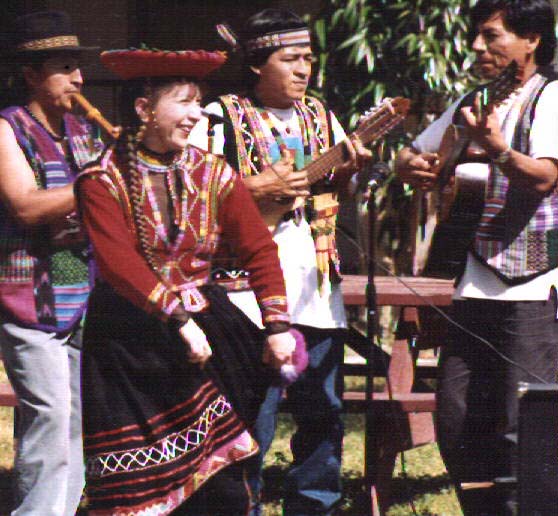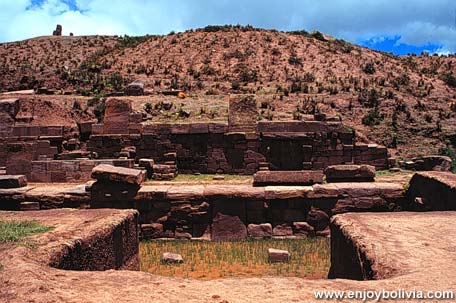Bolivian Culture
62% of Bolivia’s population is indigenous. The two main
groups are the Quecha and the Aymara. This society is very different from the
main culture of the United States. The easiest way to show their differences is
to compare them using Kluckholn’s Value-Orientation Model, which is broken into
the five categories of Time, Human Activity, Relationship to Nature and Super
nature, Relationship to Other People, and Innate Human Nature.

Time
According to Kluckholn, cultures can value different aspects of
time. They can place emphasis on the past, present, or future. Time is a strange
concept in the United States. Everyone places so much energy towards the future.
They work hard now so they can be successful later. Not all cultures are like
that, especially the indigenous cultures. In Bolivia, there is an emphasis on
the Past. There is a strong value on history, tradition, roots, and their
ancestors. It is interesting to see how much of their history they have been
able to hold on to even though they were colonized by the Spanish. One example
of this is the “tawantin,” which is a ritual that is a rite of passage for the
adolescents. In this ritual the children’s’ faces are divided into four parts
that symbolize the four parts of the Incan empire. Also, in Bolivia, offerings
are made
to the symbolic parts of Kaata (a mountain) to maintain
the integrity of the community. When forming a public communications plan in
Bolivia, it is important to study the Quecha and Aymara myths. The public will
not be receptive to a message that contracts with any of their ancient
practices, and a PR practitioner could also take the lessons from the ancient
traditions to appeal to the audience on a more personal level.
Human Activity
Americans are Doing oriented. They are concerned with
their own personal achievement, and they measure their success by the products
of their actions. The indigenous population in Bolivia is the opposite; they are
Being oriented. This means that they are defined by who they are in a social
situation. The Quecha and Aymara people place a lot of emphasis on who they are
in their community. They are especially conscious of their family. They take
pride in the family that they come from, and when they marry, it is important to
marry someone with similar social standing. This means that in a public
communications plan, it would be beneficial to emphasize the greater good, not
just the personal gain that the message would bring.
Relationship to Other
People
Individualistic society will place a high value on the nuclear family.
The United States is an individualistic society. But, the Bolivians are a Lineal
society, which means they place a large emphasis on their ancestors. Their
ancestors are an important part of their family, and they are very highly
respected. This is shown through their extensive knowledge of the past, and also
through rituals where ancestors are involved. From a public communication
standpoint, this emphasizes how important history is to these people. In order
for them to be receptive to the message, the PR person would have to also have a
strong knowledge of their history to understand their culture.
Relationship to Nature and the Supernature
In the United
States, there is a belief that they have a mastery over nature. They can predict
and prepare for extreme weather conditions, and they believe that they can
control nature. The Bolivians do not have the same belief. They are Harmonious
with Nature, which means they work with nature. Nature is one of the most
important things in the indigenous tradition. “Pacha Mama,” or Mother Earth, is
almost an equivalent for Eve. Pacha Mama symbolizes femininity and fertility.
There are many rituals dedicated to Pacha Mama, and every harvest, the Bolivians
give offerings and hope that she accepts them and gives them a good harvest.
This shows the importance of the land and the natural resources t
Relationship to Other People
Individualistic society will place a high value on the nuclear family.
The United States is an individualistic society. But, the Bolivians are a Lineal
society, which means they place a large emphasis on their ancestors. Their
ancestors are an important part of their family, and they are very highly
respected. This is shown through their extensive knowledge of the past, and also
through rituals where ancestors are involved. From a public communication
standpoint, this emphasizes how important history is to these people. In order
for them to be receptive to the message, the PR person would have to also have a
strong knowledge of their history to understand their
culture.
o the people. In a
public communications plan, it is important to show how nature might benefit
from the plan. Even if the plan is something that will destroy nature, it is
important that it is not presented that way. The indigenous people must always
believe that what is being done is for the good of the land.
Innante Human Nature
In general,
Americans believe that Human Nature is inherently evil. But, not all cultures
believe that human nature is always bad. In Bolivia, people are assumed to be
inherently good. There is no type of purification right that every child must go
through to cleanse their evil soul. People are just believed to be born with
good hearts. They believe that people learn to be bad. This is important to
understand in a public communications campaign that people are generally good
because the issue of trust is not as relevant. This is important to know when
interacting with the Bolivian population, whether it is the employer one works
for or the client, interpersonal relations are very important in the work place.
Communication between two groups of people will always be a lot more successful
if they understand each other.

Lindsay Strug
May 2005
Prof. Zaharna
International Public
Relations
American University
This is a photo of the Sacred Bolivian site Tiahuanaco.



